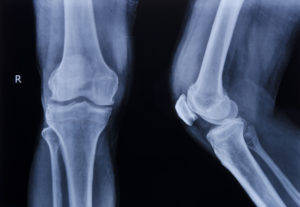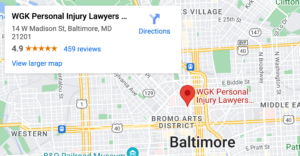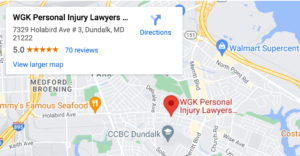
Broken bones, or bone fractures, plague millions of people in the U.S. each year.
Across the nation, more than two million people suffer broken bone injuries every year.
Young children and aging adults tend to be most susceptible to fractures.
Table of Contents
Types of Broken Bone Injuries
Bone fractures are classified by the kind of break and its pattern, based on criteria from the American Academy of Orthopaedic Surgeons.
Open Fractures vs. Closed Fractures
First, a bone fracture is categorized as a closed or open fracture. In closed fractures, also called simple fractures, the skin remains intact although the bone is broken.
In open fractures, also called compound fractures, the bone breaks through the skin or is exposed by a deep wound. The edges of compound fractures are often jagged and the bones are usually significantly displaced.
Communiuted Fractures vs. Compression Fractures
In addition to being classified as open or closed, there are several types of fractures, each characterized by a unique break pattern. The break pattern dictates the kind of treatment used.
Two break patterns that can cause the most pain, and can be difficult to treat, are comminuted fractures and compression fractures. In each of these patterns, the bone breaks into many pieces.
In comminuted fractures, the bone is shattered into three or more pieces. Comminuted fractures can be either open (with broken skin) or closed (bone is broken without breaking the skin).
Common in spinal vertebrae, compression fractures are characterized by the bone collapsing on itself. There are many other, less common, types of fractures.
How Do Doctors Diagnose Broken Bone Injuries ?

To diagnose broken bone injuries, doctors use various methods.
The diagnostic process usually begins with patient-reported symptoms and a review of the patient’s medical history.
Once a suspected diagnosis is determined, doctors may use other diagnostic tools to confirm the diagnosis.
Diagnostic tests used to confirm broken bones include X-rays, MRIs, and CT scans.
Following a broken bone, patient-reported symptoms can vary depending on which bone is broken. Common injury symptoms of a broken bone include:
- Edema
- Severe pain
- Difficulty using the limb
- Prominent or unusual lumps, bends, or twists in bones
Many of these symptoms also sometimes occur along with heat and redness near the area of the break.
How Are Broken Bone Injuries Treated?
Treatment for broken bone injuries can vary. Treatment is dictated by the age and health of the injured party, the fracture’s severity, and the type of fracture. Regardless of the treatment method, healing broken bones requires ongoing medical care.
After an initial evaluation and diagnostic labs, repeated appointments are often required for evaluation of the bone healing process. In addition, there may be pre-op, surgical, or post-op appointments. Patients may also have physical rehabilitation or therapy appointments.
The first line treatment protocol for broken bones involves a splint or a cast. Occasionally, a broken bone injury may require traction. Surgery is recommended in rare cases.
Complications from Treatment of Broken Bone Injuries
During a patient’s treatment and recovery from a broken bone injury, they can suffer complications. Complications related to broken bones can include:
- Sores (ulcers) caused by cast-wearing
- Joint stiffness
- Blood clots
- Swelling of the muscles near the fracture
- Hemarthrosis (swelling caused by bleeding directly into a joint)
A patient who is entitled to compensation for their broken bone injury may also be entitled to compensation for expenses related to complications from treatment of the broken bone injury.
What Causes Most Broken Bone Injuries?
The most common causes of broken bones include car accidents, truck accidents, and slips and falls. But these are not the only events that lead to broken bones.
You may have a medical malpractice claim if you suffered a broken bone from a procedure that did not have a reasonable risk of broken bones. In fact, one classic medical malpractice case involves a broken bone after an X-ray procedure.
Sadly, there are instances in which elderly or infirm residents of nursing homes experience nursing home abuse. One red flag of this type of abuse is a broken bone in a bedridden or limited-mobility patient.
Broken bones are often caused by a fall from a height, like one that might occur on a construction worksite. If a person is injured at work, their injuries may be covered by workers’ compensation.
What Damages Can I Get for Broken Bone Injuries?

The kind of damages available for a broken bone injury depends on the circumstances of the case. For example, damages available for a workers’ compensation claim may differ from the damages available in a medical malpractice claim, even for the same injury.
In workers’ compensation cases in Maryland, specific expenses are allowed.
The expenses allowed in Maryland workers’ compensation cases include:
- Expenses for reasonable and necessary medical treatment (ambulance, therapy)
- Lost wages, job training expenses, benefits for permanent disability
- Medical devices, like prostheses or wheelchairs
Medical treatment expenses continue until the full recovery is achieved or further treatment will produce no meaningful improvement in the condition.
Similarly, most of the same kinds of expenses can be recovered in a medical malpractice case. However, in Maryland, non-financial expenses in medical malpractice cases are capped. Economic damages are not capped.
Economic damages in medical malpractice cases include:
- Past and future medical expenses
- Past and future lost wages and benefits
- Future loss of future earning capacity
To successfully recover in a medical malpractice case, each expense must be proven to be a result of the act of medical malpractice.
How Will Maryland’s Contributory Negligence Rule Impact My Broken Bones Injury Case?
Maryland has pure contributory negligence rules. This means an injured party cannot recover compensation if they are in any way responsible or to blame for their injury.
Because of this, insurance companies and the other party may try to unfairly accuse you to place you at blame for your injury. A skilled personal injury attorney can defend you against unfair claims and fight to secure the compensation you rightfully deserve.
How Long Do I Have to File a Broken Bones Injury Case in Maryland?

Maryland, like most states, has laws that govern when a person can file a lawsuit.
The statute of limitations, or deadline, to file a personal injury claim in Maryland is three years from the date of the injury.
While three years may sound like a long time, it is important to establish the attorney-client relationship shortly after the accident, if possible.
The sooner you establish the attorney-client relationship, the sooner your attorney can get to work on your case.
Contact Our Baltimore Personal Injury Lawyer Today
If you have suffered a broken bone injury because of someone else’s fault or negligence, you should reach out to a personal injury attorney to learn more about your legal rights to recover compensation. Contact a Baltimore lawyer at WGK Personal Injury Lawyers, contact our Baltimore law office today at (410) 837-2144 for a free case evaluation.


